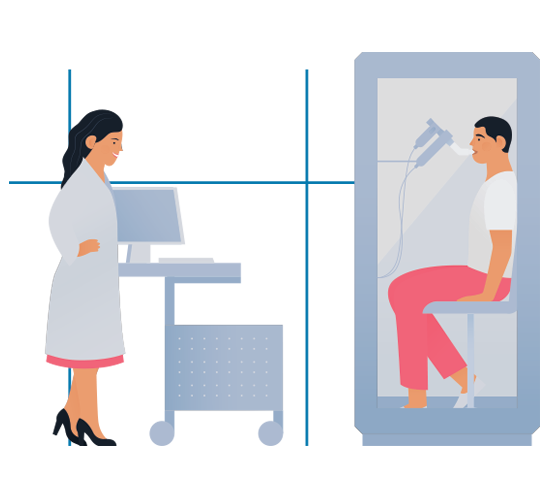
Body Plethysmography is considered the gold standard method in measuring lung volumes and capacities. Using a fixed volume cabin, the system allows us to calculate with great accuracy the volume of air in the lungs and the corresponding lung capacities, at various phases of the respiratory cycle. By body Plethysmography we can:
- determine the type of respiratory disorder (restrictive or obstructive syndrome)
- diagnose and monitor the progression of restrictive lung diseases such as pulmonary fibrosis
- diagnose, monitor, and assess the severity of obstructive airway diseases such as Chronic Obstructive Pulmonary Disease (COPD)
- measure Airway Resistance i.e. evaluate the difficulty of air flow during inhalation and exhalation
- Preoperative evaluation
Some indicative volumes and capacities:
- Total Lung Capacity the total volume of air in the lungs at the end of a maximum inhalation
- Residual Volume the volume of air remaining in the lungs after a maximum exhalation
- Functional Residual Capacity – the volume of air in the lungs at the end of a normal expiration. It represents the equilibrium position of the respiratory system, where the opposite elastic forces of the chest wall and the lung are balanced( the outward tendency of the chest wall to expand, is balanced by the inward tendency of the lungs to collapse).

